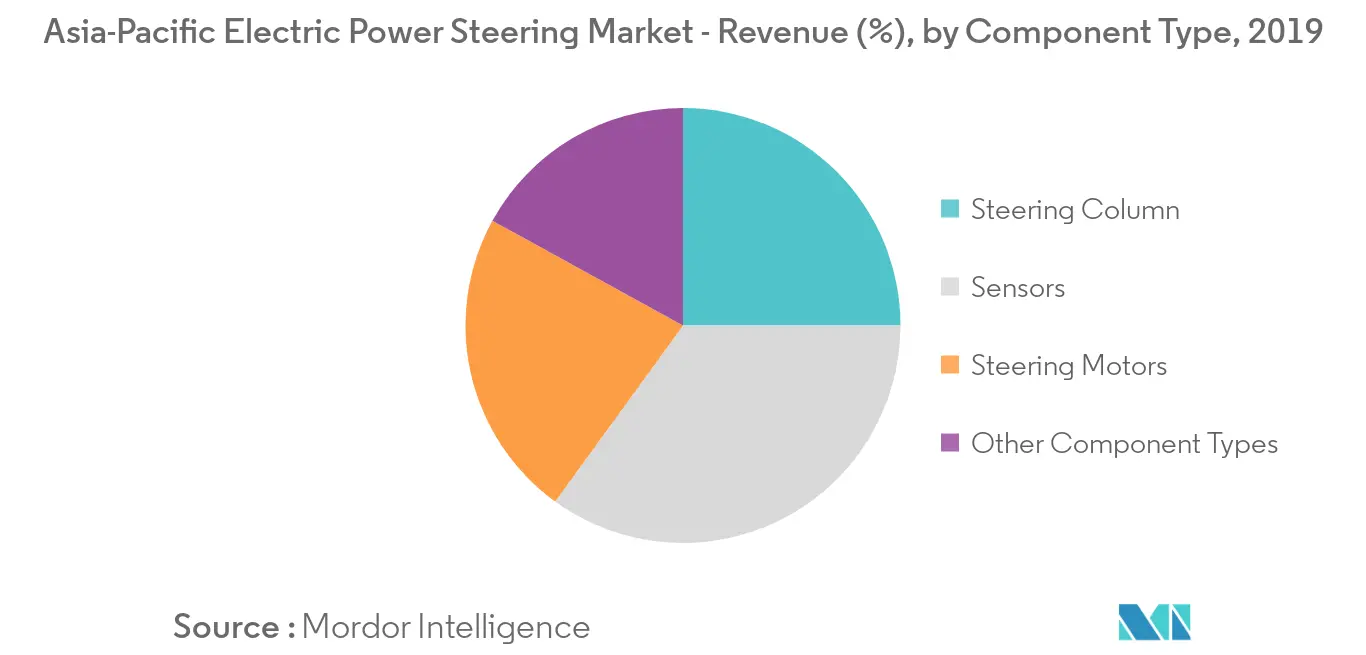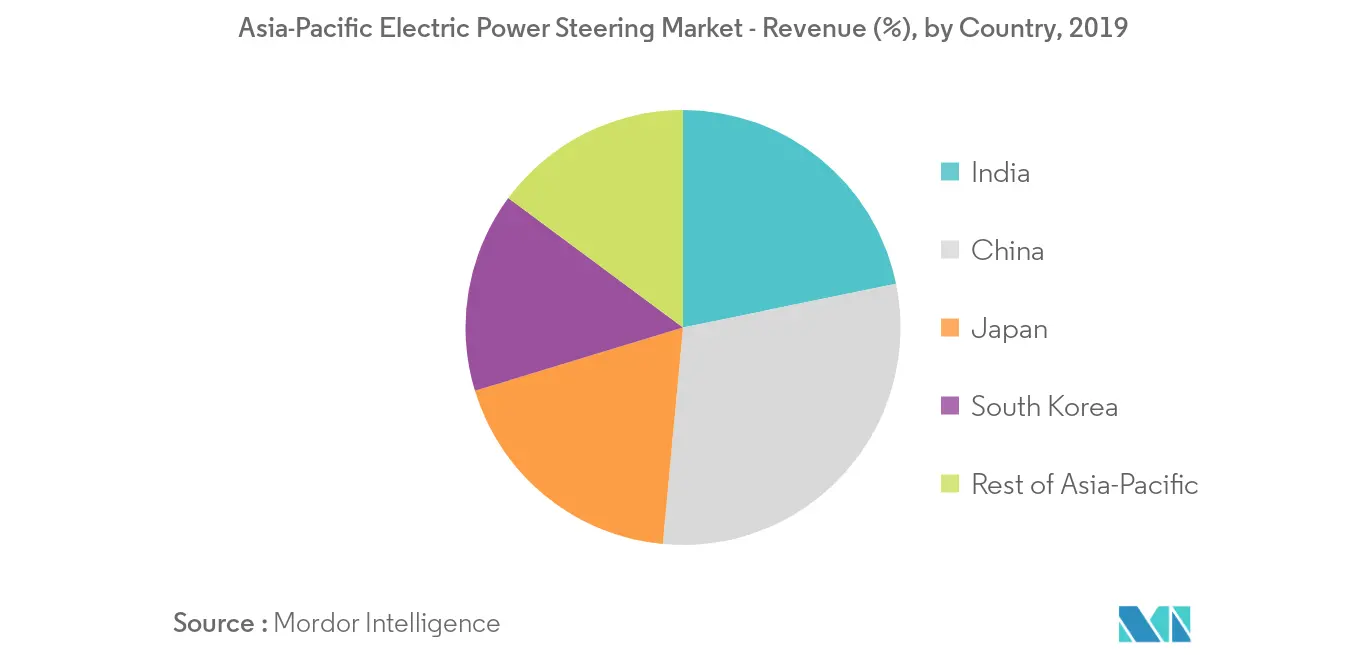Market Trends of Asia-Pacific Electric Power Steering Industry
This section covers the major market trends shaping the APAC Electric Power Steering Market according to our research experts:
Sensors Segment is Expected to have a Significant Growth
Currently, the sensors are experiencing more growth compared to other components, and it is expected to continue its dominance during the forecast period. The increasing demand for this segment is attributed to provide comfort to the passengers. The sensors are located in the steering column which measures two primary driver inputs - torque (steering effort), and steering wheel speed and position.
Thus, there are three types of sensors used in such systems - torque sensor, steering wheel speed sensor, and position sensor. Torque sensors are generally non-contact sensors. These sensors measure the steering force applied by the driver, and thus, enables sensitive control of the electric steering support.
- It works based on a non-contact magnetic measuring principle. It contains a magnet unit, a flux-tube unit, and a sensor unit. The torque sensor itself has two independent coils of wire. One of the coils determines if a right-hand turn is being made, while the other determines if a left-hand turn is being made. The signal is then sent from the EPS module to the appropriate coil, which then assists the vehicle in steering.
With the growing advancement in technology, sensor products have also been consistently upgrading. For instance,
- In June 2019, Continental AG had unveiled a new short-range radar sensor which allows for more precise detection of vehicle surroundings. In place of the 24 GHz technology used up to now, the new radar generation operates using 77 GHz technology.
- In June 2018, Infineon technologies AG developed a new magnetic angle sensor TLE5014. The new product can be easily integrated into a safety critical EPS system. The TLE5014 sensors meet ISO26262 ASIL C for the single die and ISO26262 ASIL D for the dual die versions.
Additionally, the automobile industry in Asia-Pacific countries have significant growth potential, owing to low automobile production costs, easy availability of economical labor, lenient emission, and safety norms, and government initiatives to support foreign direct investments (FDIs).

India to Experience Fastest Growth
The Indian economy is growing and is anticipated to experience the fastest growth in the market. The increase in growth can be attributed to the government initiatives, increasing sales in passenger cars, and vehicle production has gone up drastically. Due to the hike in vehicle production, the electric power steering component market is also gaining momentum. Additionally, the Indian government has modified the tax slabs on gasoline, diesel, and hybrid cars, in its 2018 budget to promote vehicle sales.
Currently, more than 30% of the passenger cars are running with EPS technology in India, and the technology is likely to be implemented in the majority of the budget passenger cars as well, during the forecast period. Some of the major automakers, who have launched the EPS system in their models in India, in 2018, include Tata Motors, Datsun and Ford. For instance,
- In April 2018, Tata Motors announced that it will expand its Nexon range powered by automatic manual transmission (AMT) technology, by launching the Nexon HyprDrive Shelf-Shift Gears model. The model comes with the feature of lowest turning circle radius of 1.5 m with the electric power-assisted steering (EPAS).
- In March 2018, Datsun India launched a remix edition of Datsun GO and GO+ models. Both the models featured speed-sensitive electric power steering.
- In January 2018, Ford introduced compact utility vehicle (CUV) the all-new Ford Freestyle in India and the vehicle was made available for sale in the second quarter 2018. The Freestyle offers a uniquely tuned EPAS.
Thus, India is experiencing a good potential for automotive EPS business, as automakers in India have gradually started adopting the EPS system in their advanced vehicle models and anticipated to continue to adopt in their upcoming models in the future.


